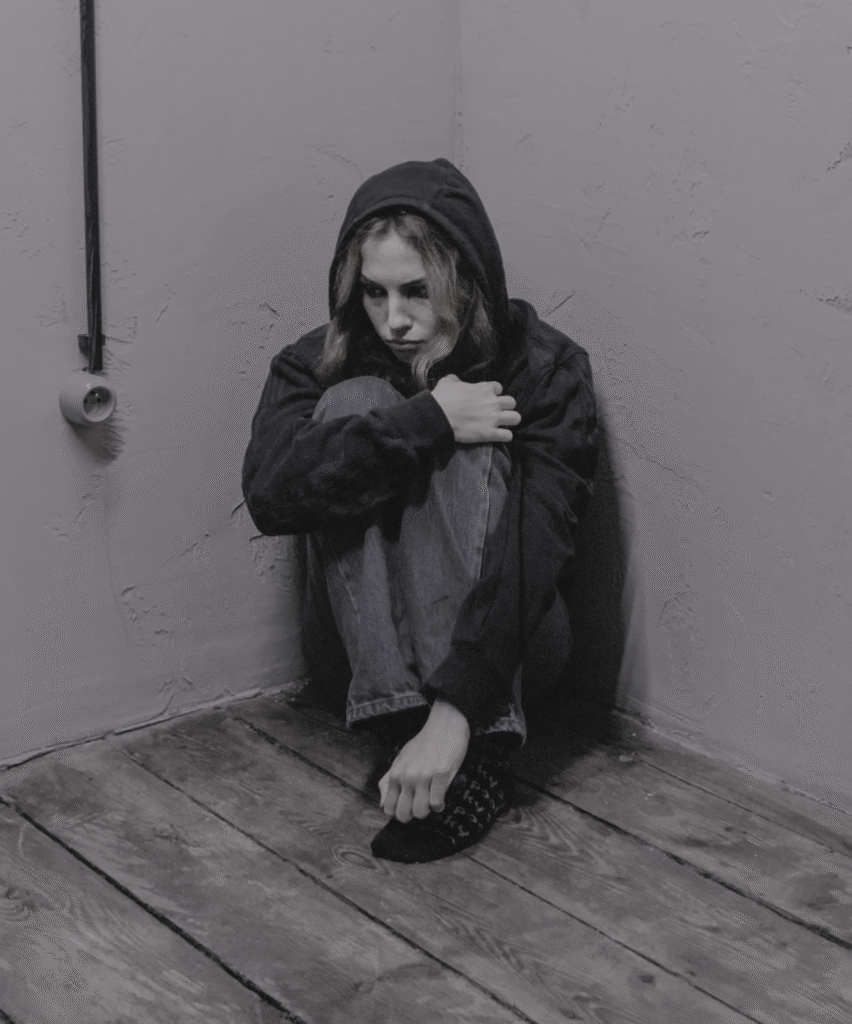Understanding Teen Self Harm: Why It Happens and How To Help
Adolescence is a turbulent time – full of emotional highs and lows, identity searching, and intense social pressures. But for some teens, the emotional turmoil becomes overwhelming, and they turn to self-harm as a way to cope.
Self-harm, often referred to as non-suicidal self-injury (NSSI), is when someone deliberately injures themselves – most commonly through cutting, scratching, or burning – as a way to cope with overwhelming emotions.
For teens, this can become a hidden, yet powerful way to express emotional pain they don’t yet have the words to explain.
According to recent studies, 1 in 5 teens have engaged in self-harm at least once. But it is often misunderstood.
Self-harming isn’t attention-seeking or a suicide attempt – it’s a coping mechanism for intense feelings like anxiety, anger, shame, or sadness.
This blog post unpacks the underlying reasons behind self‑harm, outlines supportive actions for parents, and highlights therapy options that work.
Why Teens Self‑Harm

Emotional Overwhelm and Coping Mechanism
Many teens who self-harm say they do it to relieve intense emotional pain they feel unable to express or manage. Feelings like sadness, anger, anxiety, or shame can become so overwhelming that self-injury feels like a way to release the pressure. It can temporarily distract from emotional turmoil, even though it ultimately causes more harm.
The physical pain and visible wounds can paradoxically soothe intense inner distress.
Emotional Numbness or Dissociation
Some teens don’t feel overwhelming emotion – they feel nothing at all. Emotional numbness, also known as dissociation, can make a teen feel detached from themselves or reality. In these cases, self-harm may serve as a way to “feel something” or reconnect with the physical world.
It becomes a misguided attempt to break through emotional isolation.
Bullying, Trauma, and Mental Health Conditions
Bullying significantly increases a teen’s risk of self‑harm, as victims may suffer from depression, anxiety, PTSD, or low self‑esteem.
Underlying mental-health disorders – including mood disorders and personality disorders – may also contribute to self‑injury behaviours.
Temporary Relief, Reinforcement, and Addiction
Cutting often brings immediate, albeit temporary, relief – reinforcing the cycle and making it feel almost addictive. “It relieves pressure inside like a valve” is a commonly used description.
Overwhelming Crisis or Isolation
Teens may self‑harm to exert perceived control over chaotic emotions or to escape feelings of isolation. Michael Hollander’s stories reflect how “out-of-control emotions lead some teens to hurt themselves.”
During times of emotional chaos – like parental divorce, academic pressure, or bullying – self-harming can offer a misguided sense of control over pain.
Peer Influence or Online Exposure
Some teens learn about self-harm through peers, online communities, or social media. While self-injury is not contagious in a literal sense, exposure can normalize the behaviour or introduce it as a coping strategy.
Teens who are already vulnerable may be more likely to try it after seeing or hearing about others who do.

Signs Your Teen Is Self-Harming
Self-harm is often done in secret.
Many teens go to great lengths to hide their injuries out of shame, fear of punishment, or simply not knowing how to talk about their pain.
As a result, it’s not always obvious – but there are both physical and behavioural warning signs that may indicate a teen is engaging in self-injury.
If your gut is telling you something is wrong, listen to it. Trust your observations, even if your teen denies it at first.
Compassion, patience, and professional support are your best tools in helping them move toward healing.
Here are some red flags that might indicate your teen is engaging in self-harming behaviours:
Unexplained cuts, scratches, bruises, burns, or scars – especially on the arms, thighs, stomach, or chest
Wearing long sleeves or pants even in hot weather
Frequent “accidents” or explanations that don’t add up
Blood stains on clothing, bedding, or tissues
Possession of sharp objects without explanation (razor blades, safety pins, glass shards, etc.)
Intense mood swings or emotional outbursts
Withdrawal from family and friends
Avoidance of activities that expose skin (like swimming or changing in front of others)
Expressions of self-hatred, guilt, or worthlessness
Increased irritability, agitation, or anxiety
Decline in academic performance or interest in hobbies
Talking or joking about self-harm, even casually
Following social media pages or forums that glamourize self-harming behaviour
Writing or drawing images related to pain, death, or despair
Searching for methods of self-harm online
What Parents Can Do to Support Their Teens
Respond With Calm and Compassion
Resist the urge to react with anger, panic, or guilt. Your teen needs to feel safe and accepted, not shamed.
Try saying: “I see you’re going through something really painful. You don’t have to go through it alone.”
Avoid Intrusive Control
Don’t search their room or check their body without consent This breaks trust. Instead, create space for them to open up willingly.
Listen With Empathy, Not Judgment
Avoid guilt‑tripping comments like “Why would you do this?” or “You’re hurting me.”
Instead, ask, “Would you like to talk about why you cut?”
Approach conversations calmly, using “curiousity” rather than blame.
Start an Open Conversation
Ask open-ended, non-judgmental questions. Focus on the reasons they’re feeling overwhelmed, not just on the behaviour.
“Can you help me understand what led you to do this?”
“What does it feel like before and after you hurt yourself?”
Tell your teen “I love you and want to help you stay safe.”
Avoid “why” questions that may feel accusatory – focus instead on emotional connection and safety.

Don’t Punish or Threaten
Self-harm is not a discipline issue – it is an emotional one. Removing sharp objects or punishing them without helping them process their pain often makes things worse, not better.
Seek Professional Support
Secure an assessment by a mental-health professional experienced with youth self‑harm. Therapy, medication (when appropriate), and safety planning are often crucial next steps.
Therapy is essential. Look for therapists trained in Dialectical Behaviour Therapy (DBT) or Cognitive Behavioural Therapy (CBT) – both are evidence-based for treating self-harming behaviours in adolescents.
Self‑Care for Parents and Family
Parents also need support. Taking care of yourself is key to taking care of your teen. Whether it is to get professional support or to learn new and effective communication, parental connection is the key to healing.
Don’t ignore or minimize the behaviour
Saying things like “you’re just doing this for attention” can push teens further into isolation.
Don’t assume it’s just a phase
Even if it seems like a one-time incident, self-harm is a sign of deep emotional distress. Take it seriously.
Effective Therapies for Teen Who Self-Harm
Dialectical Behaviour Therapy (DBT)
Dialectical Behaviour Therapy (DBT) is a highly effective, evidence-based treatment that helps teens who self-harm by teaching them healthier ways to manage intense emotions and cope with distress.
Originally developed for individuals with borderline personality disorder, DBT has been adapted for adolescents struggling with emotional dysregulation, self-injury, and suicidal thoughts.
Through a structured approach that combines individual therapy, skills training groups, and family involvement, DBT helps teens build skills in four key areas:
- Emotional regulation
- Distress tolerance
- Mindfulness
- Healthy communication
These tools empower teens to better understand and tolerate their emotional experiences, reduce impulsive behaviours like self-harm, and develop more effective ways to express their pain and seek support.For many teens, DBT becomes a turning point in breaking the cycle of self-injury and learning to cope with life in a safer, more balanced way.
Michael Hollander, PhD – a leading expert in adolescent self-harm – praises DBT in his book Helping Teens Who Cut. His work shows how DBT skills help teens replace self-injury with safer coping strategies.
Cognitive Behavioural Therapy (CBT)
Cognitive Behavioural Therapy (CBT) helps teens who self-harm by addressing the underlying thought patterns and emotional triggers that lead to self-injurious behaviour.
CBT operates on the principle that our thoughts, feelings, and behaviours are deeply connected – so by identifying and challenging negative or distorted thinking (like “I’m worthless” or “I deserve to feel pain”), teens can begin to change how they feel and how they respond to stress.
In CBT, teens learn practical coping strategies such as identifying triggers, developing healthier responses to emotional distress, and practicing problem-solving skills.
Over time, this approach helps reduce the urge to self-harm by replacing harmful behaviours with more constructive, self-compassionate ways of managing emotions.
CBT can also help teens build resilience and a stronger sense of control over their mental health.
Family Therapy
Family therapy can play a crucial role in supporting teens who self-harm by improving communication, strengthening relationships, and creating a more emotionally safe and supportive home environment.
When a teen engages in self-injury, it often reflects not only their inner pain but also underlying family dynamics or stressors that may contribute to their distress.
In family therapy, everyone has the opportunity to share their experiences and learn how to listen without judgment, express emotions in healthier ways, and resolve conflicts more effectively. It also helps parents and caregivers better understand the teen’s struggles and teaches them how to respond with empathy rather than fear, anger, or confusion.
By working together, families can build stronger connections and support systems that are essential for the teen’s recovery and long-term emotional well-being.
Medication and Co‑Occurring Conditions
In some cases, treating underlying depression, anxiety, or other disorders with medication in combination with therapy may be appropriate – always under professional guidance.
Exercise and Substitutes for Self‑Harm
Real-world accounts highlight exercise as a coping alternative, offering mood benefits similar to self-harm, though communication and context matter.
Creative tools – like fidget keychains or using markers – can help redirect urges in healthier ways.
Self-harm is painful – for both teens and the people who love them. But it doesn’t define your child, and it doesn’t have to define their future.
With the right support, therapy, and unconditional love, teens can and do recover.
As a parent or caregiver, your empathy, patience, and presence are more powerful than you may realize.
Give us a call to find out how we can help you and your family.












